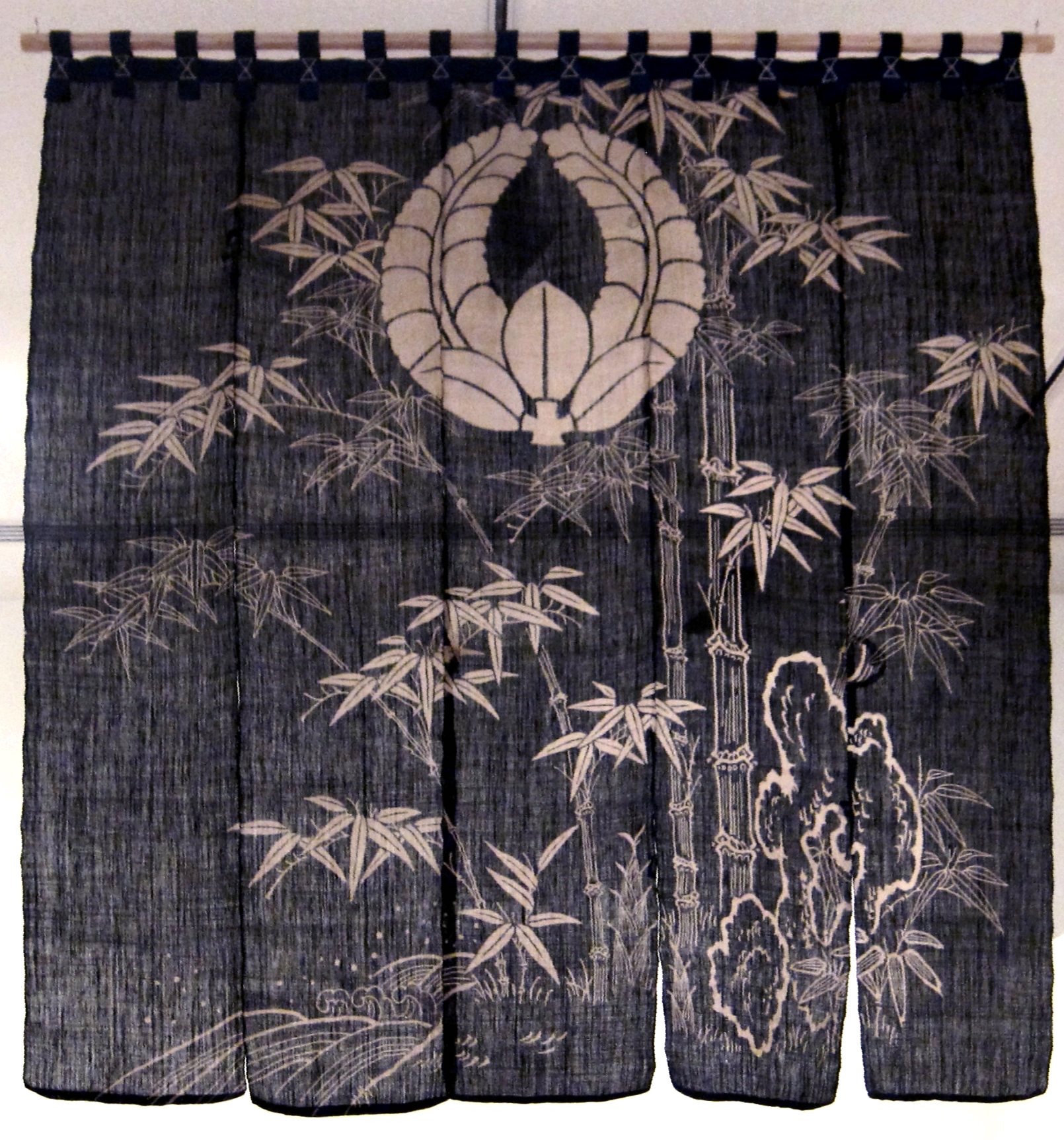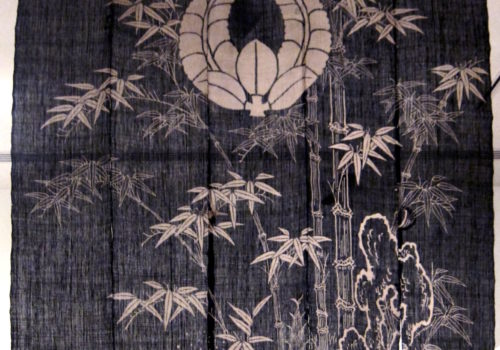Technique
The rice paste is typically made from sweet rice, which has a high starch content and is therefore rather sticky. The paste is applied through a tube (the tsutsu) similar to the tubes which are used by bakers to decorate cakes. A related process is to apply the paste through a stencil; that is called katazome. The cloth is typically cotton, and the dye is typically indigo, so the design is usually white on blue.
Meaning & Symbols
The designs are often creatures from Japanese mythology such as the crane or the tortoise, or a family crest, or a name (written in kanji). Flowers and trees are common motifs as well.



